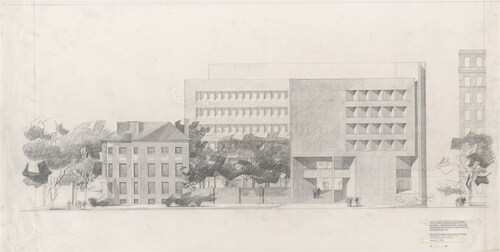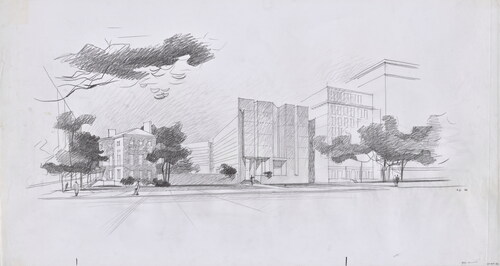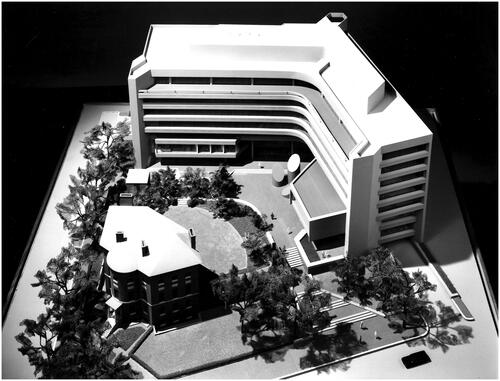Figures & data
Figure 1. Mitchell/Giurgola Architects, AIA Headquarters, Washington, DC, Competition Project. Photograph of the winning competition entry model. The Octagon House is in the foreground of the corner site with 18th Street to the left and New York Avenue on the right. The proposed additions are in the background. Source: Mitchell/Giurgola Collections, The Architectural Archives, University of Pennsylvania (collection 267), Philadelphia. Photograph by Rollin La France.
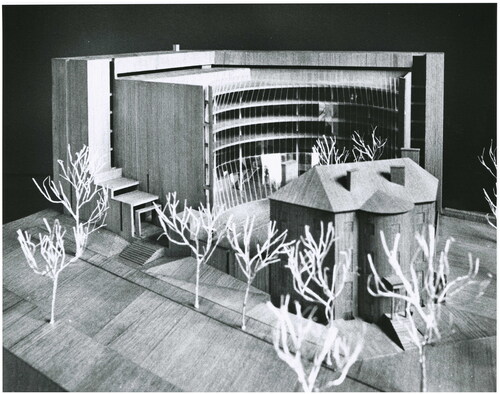
Figure 2. John Carl Warnecke and Jacqeline Kennedy consider Warnecke’s scheme for Lafayette Square. Source: John F. Kennedy Presidential Library and Museum, Boston, MA, KN-24273.
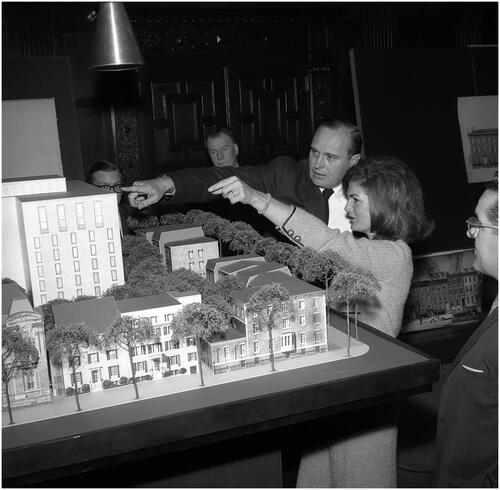
Figure 3. Pattern of redevelopment underway in Washington, DC in the post-war period. Map included in Carl Feiss, “A Program for Landmarks Conservation in the District of Columbia: Recommendations to the National Capital Planning Commission on the Preservation of Historic Landmarks, Buildings, Monuments, Places and Districts of Historic, Architectural and Landscape Merit in Washington, DC” (Washington, DC: 1963). Source: Gelman Special Collections, George Washington University, Washington, DC.
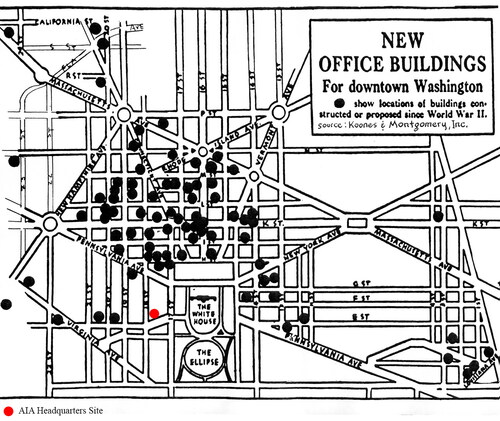
Figure 4. Mitchell/Giurgola Architects, AIA Headquarters, Washington, DC, winning competition project model (unfinished) and ground floor plan. Source: Mitchell/Giurgola Collections, The Architectural Archives, University of Pennsylvania (collections 276 and 015). Photograph by Rollin La France.
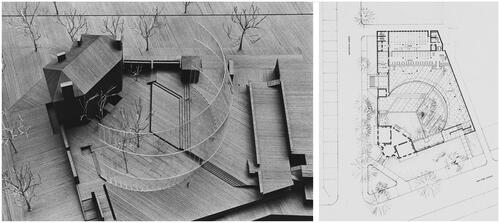
Figure 5. Mitchell/Giurgola Architects, AIA Headquarters, Washington, DC, competition project, Submitted Entry Panel #8. Perspective drawing looking from the proposed new gallery and library, towards the garden and Octagon. Source: Mitchell/Giurgola Collections, The Architectural Archives, University of Pennsylvania (collection 267).

Figure 6. Mitchell/Giurgola Architects, AIA Headquarters Competition, Washington, DC. Design sketches for new building volumes studied in relationship to the retained historic brick smokehouse on 18th Street. Source: Mitchell/Giurgola Collections, The Architectural Archives, University of Pennsylvania (collection 015).
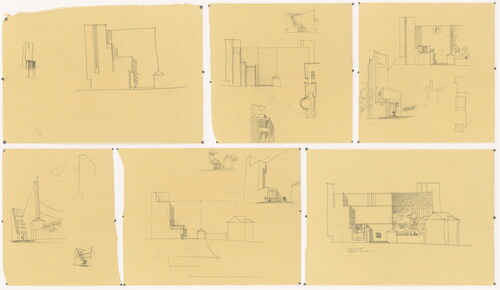
Figure 7. Mitchell/Giurgola Architects, AIA Headquarters, Washington, DC. Perspective Sketch along 18th Street showing the winning competition entry. Old, new, landscape, city and street elements were collectively framed in an urban ensemble or “fragment.” Source: Mitchell/Giurgola Collections, The Architectural Archives, University of Pennsylvania (collection 015).
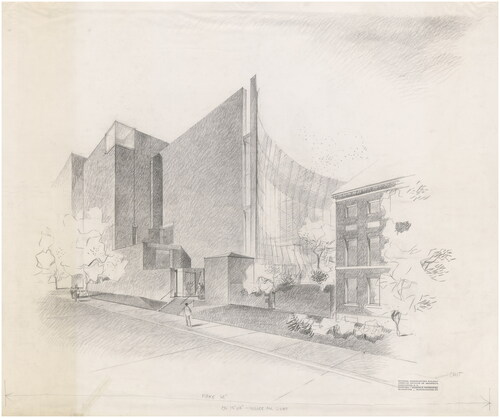
Figure 8. Mitchell/Giurgola Architects, AIA Headquarters, Washington, DC. Perspective sketch from 18th Street showing Scheme II (1967), donated by Giurgola to the Avery Library in 1980. Source: Romaldo Giurgola drawings, 1965–77, Avery Architectural & Fine Arts Library, Columbia University, New York.
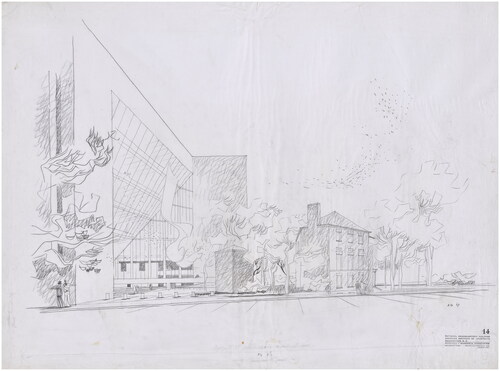
Figure 9. Mitchell/Giurgola Architects, AIA Headquarters, Washington DC. Perspective sketch from New York Avenue showing a revised larger 90–feet high Scheme II, dated May 1967. Source: Mitchell/Giurgola Collections, The Architectural Archives, University of Pennsylvania (collection 267).
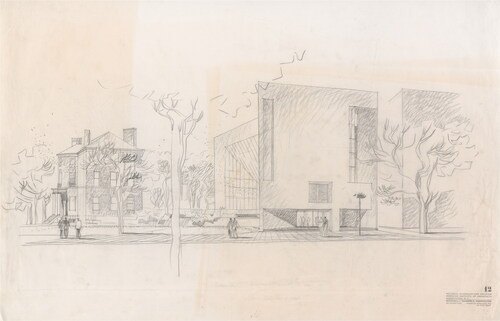
Figure 10. Mitchell/Giurgola Architects, AIA Headquarters, Washington, DC. Elevation on New York Avenue showing a further revised 70–feet high Scheme III, dated June 22, 1968. Source: Mitchell/Giurgola Collections, The Architectural Archives, University of Pennsylvania (collection 267).
